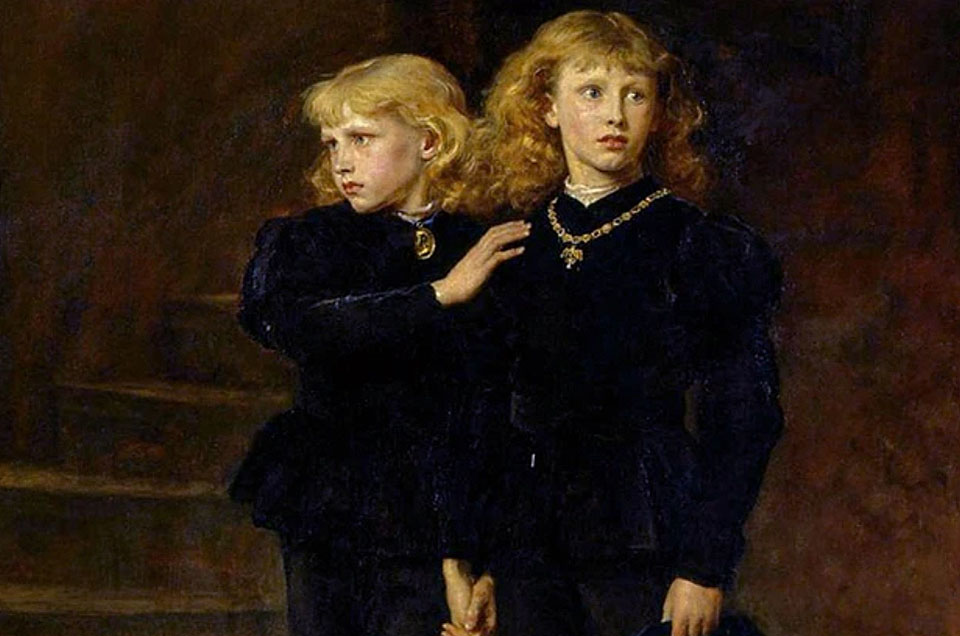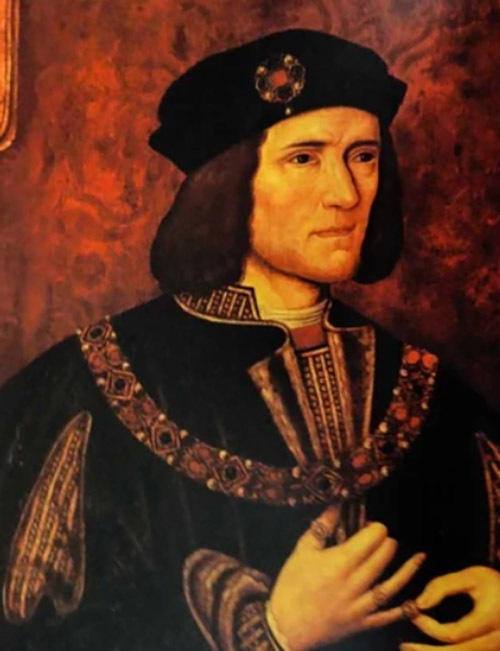

The most popular theory is that Richard Duke of Gloucester, the Lord Protector, murdered his two young nephews to make sure he ascended the throne. So Richard had the 12 year old Edward dethroned as illegitimate and had himself crowned on June 26 1483. The young princes were already in the Tower of London and were never seen again. This view is strongly endorsed in Shakespeare’s play where a nobleman Sir James Tyrrell smothered the lads and buried them at the foot of some stairs. But critics say that there is a lot of Tudor propaganda in the tales of Richard’s villainy.
Richard, as is well known, was killed at the battle of Bosworth in 1485, thrown into a pit which later became a car park and was replaced by Henry the Seventh, the first Tudor monarch. Henry, of course, had excellent reasons for getting rid of the boys if they were still alive to secure his own bloodline to the English throne. No documentary evidence exists to link Henry to the crime and even contemporaries did not accuse him of so shocking a piece of villainy. Moreover, Henry could not have ordered the dastardly deed until 1485 at the earliest which means that the princes were still unharmed in the Tower after two or three years. That sounds unlikely.
Then again, maybe the boys survived. In 1674, builders at the Tower unearthed the skeletal remains of two people at the foot of a staircase. These were declared to be the remains of the two boys and were reinterred in Westminster Abbey. But a controversial analysis in 1933 was inconclusive and the bones remain unidentified to this day. So what if the boys were never murdered at all? One theory is that the lads were smuggled out and given new identities, perhaps as builders in Colchester where there is some circumstantial evidence.

Another survival theory points out that several “pretenders” organized rebellions against Henry the Seventh and claimed to be one of the boys. Examples are Lambert Simnel and Perkin Warbeck, but they both changed their story several times and the conclusions are hazardous to say the least. In 2021 researchers claimed to have found evidence that the older boy Edward had lived out his days in the Devon village of Coldridge and became Lord of the Manor. But the evidence is circumstantial – a local chapel commissioned in 1511 has Yorkist symbols on the stained glass windows.
On the balance of probabilities, Richard the Third was responsible for ordering the killings just as Shakespeare maintained. Contemporaries blamed him and the belief seriously handicapped his efforts to secure himself on the throne he had usurped. If innocent, all he had to do was to show the boys. Whatever the truth, the saga of the princes has spawned best-selling novels and continues to fascinate historians and writers of fiction alike.
 |
 |
 |





